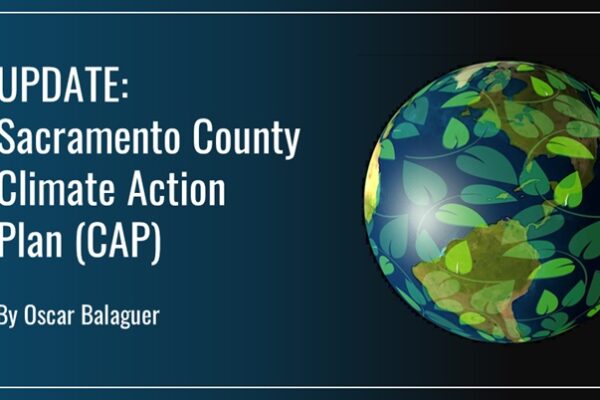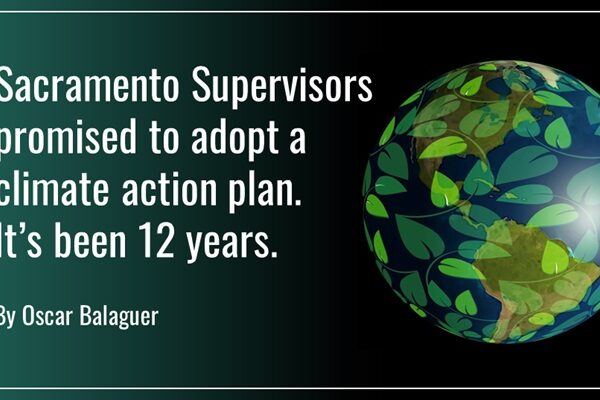
Climate Action Plan (CAP) advocacy begins in earnest this month. Sacramento County seems to be pushing for rapid completion of the CAP - maybe because it is funded by developers, and pending its adoption, development approvals are subject to lawsuit. Instead of the interactive public outreach that we see for other planning projects, public review is mostly limited to mandated public hearings
Check this schedule:
Admin Draft
We expect to see an “Admin Draft” this week. Our comment by the 19th will likely frame much of our following advocacy.
Public Draft
About Feb 2, the official draft will be open for public review. It’s important we let the County know at this early opportunity that there’s solid public support for a strong CAP.
Public Hearing
And on Feb 22 will be the first formal hearing, before the County’s Environmental Commission. Again we need to let the County know that the public expects strong climate action, not business as usual.
We’ll post the Admin Draft and links to subsequent documents, and we’ll suggest needed advocacy actions.
Our Initial Comments
350 Sacramento and partners wrote four letters commenting on preliminary County products. We identified 14 key elements needed in the CAP, as listed below (I’ve added two more). Our future advocacy will build on these, responding specifically to the draft CAP as needed.
Needed CAP Elements:
Equity. Address equity needs.
Adaptation. Include adaptation measures.
Regional Perspective. Include regional perspective [e.g., City/County cooperation in eliminating new sprawl development].
Land Use. Consider alternatives to County land use policies favoring sprawl .
Electrify. Electrify all new buildings [and old housing stock].
EVs. Apply title 24, tier 2 standards for EV charging.
Status Reports. Report on CAP implementation regularly.
Trees. Include landscape standards to support urban forestry.
Credible Measures. Measures should be detailed and actionable [i.e., feasible, effective, funded, scheduled].
Schedule. The CAP’s 12-month schedule may be too compressed to support needed public education and buy-in.
Public Participation. The CAP is getting minimal public exposure compared to other plans.
Implementation Responsibility. Identify a senior staff position responsible for CAP implementation.
Updates. Update the GHG Inventory and CAP at least every four years [the current Inventory is five years old].
CEQA. Using an “Negative Declaration” for CEQA compliance is likely inappropriate.
CAP Organization. After reviewing prelim docs, we asked the County to organize the CAP’s many proposed mitigation measures rationally, relating measures to emissions sources (on-road vehicles, building energy, etc.) and collating land use-related measures.
[Local Offsets. Developers fees paid to offset unavoidable GHG emissions should be invested in local carbon-reduction projects, prioritizing disadvantaged neighborhoods (e.g., home energy-efficiency and electrification, urban greening, transit service, EV access.]
[County Ops CAP. Audit implementation status of the 2012 County Operations CAP, and update as needed].
Written by Oscar B.


